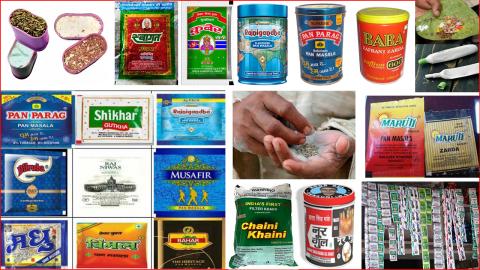Types of Oral Tobacco Products in India & What parts of mouth gets affected
Types of Oral Tobacco Products in India & What parts of mouth gets affected
Introduction
India has one of the highest rates of oral cancer in the world, primarily due to the widespread use of smokeless tobacco products. Various forms of chewing tobacco and smoking habits expose millions to the risk of developing mouth, throat, and palate cancers. This blog discusses the common types of oral tobacco products used in India and the areas of the mouth where cancers commonly occur.
For more information on smokeless tobacco products, visit the World Health Organization (WHO) FCTC resource: WHO Smokeless Tobacco Products
Common Types of Oral Tobacco Products in India
Tobacco consumption in India is diverse, with several forms widely used across different regions. These products significantly contribute to oral and throat cancer.
1. Gutkha
A chewing tobacco mixture containing areca nut, slaked lime, catechu, and flavoring agents.
Widely used across Uttar Pradesh, Bihar, Maharashtra, and Gujarat.
Highly addictive and linked to oral submucous fibrosis (OSMF) and mouth cancer.
2. Khaini
Sun-dried tobacco leaves mixed with slaked lime, commonly chewed.
Popular in Bihar, Jharkhand, West Bengal, and Uttar Pradesh.
Can lead to oral cancer, gum disease, and leukoplakia (precancerous white patches).
3. Zarda
Flavored chewing tobacco, often used in paan.
Found mainly in Uttar Pradesh, West Bengal, and Maharashtra.
Linked to tongue cancer, gum disease, and esophageal cancer.
4. Paan (Betel Quid with Tobacco)
A mixture of betel leaves, areca nut, slaked lime, and tobacco.
Common in West Bengal, Assam, Odisha, and Tamil Nadu.
Long-term use increases the risk of cheek cancer, tongue cancer, and throat cancer.
5. Mawa
A dry chewable mixture of tobacco, areca nut, and lime.
Popular in Gujarat, Rajasthan, and Maharashtra.
Known to cause submucous fibrosis leading to restricted mouth opening and mouth cancer.
6. Hookah & Hukkah (Shisha)
Tobacco smoked through a water pipe, often flavored.
Used mainly in Punjab, Haryana, Rajasthan, and urban metro cities.
Causes lung cancer, throat cancer, and esophageal cancer.
7. Bidi
A thin, hand-rolled cigarette made of tobacco wrapped in a tendu leaf.
Widely used in rural India, especially Madhya Pradesh, Maharashtra, and West Bengal.
Leads to oral cavity cancer, throat cancer, and lung cancer.
8. Hookli (Local Pipe Smoking)
A traditional tobacco pipe used by the elderly in rural areas.
Common in Gujarat, Rajasthan, and tribal areas.
Causes oral, throat, and lung cancer.
9. Snuff (Naswar)
Finely ground tobacco powder, inhaled through the nose or placed in the mouth.
Found mainly in northern states like Punjab, Uttar Pradesh, and Kashmir.
Linked to nasal and throat cancer.
Locations Where Cancers Commonly Occur in Oral Tobacco Users
Different forms of tobacco use cause cancer in specific areas of the mouth and throat.
1. Buccal Mucosa (Inner Cheeks)
Commonly affected in gutkha and paan users.
Early signs include red/white patches, ulcers, and thickened skin.
2. Tongue
Affected by khaini, zarda, and betel quid.
Symptoms include pain, difficulty in swallowing, and non-healing ulcers.
3. Floor of the Mouth
Primarily impacted by smokeless tobacco and paan.
Cancer here can spread quickly to jawbones and lymph nodes.
4. Gums & Jaw
Zarda and khaini can cause gum cancers and jawbone involvement.
Leads to tooth loss and persistent gum bleeding.
5. Hard Palate (Roof of the Mouth)
Affected by hookah, bidi, and hookli smokers.
Symptoms include chronic ulcers and difficulty in speaking or eating.
6. Throat (Pharynx & Larynx)
Smoking tobacco (bidi, hookah, and cigarettes) contributes to throat and voice box cancers.
Symptoms include persistent sore throat, hoarseness, and difficulty swallowing.
Conclusion
Oral tobacco consumption in India remains a significant health concern, leading to high rates of mouth and throat cancers. Early detection and quitting tobacco can prevent severe complications. If you notice persistent ulcers, difficulty swallowing, or white/red patches in the mouth, consult a head and neck cancer specialist immediately.
📍 Consult Dr. Abhimanyu Kadapathri at Apollomedics Superspeciality Hospital, Lucknow, for expert diagnosis and treatment.
🌐 Visit: headandneckcancersurgeon.com for more details.

.jpeg)

Comments
Post a Comment